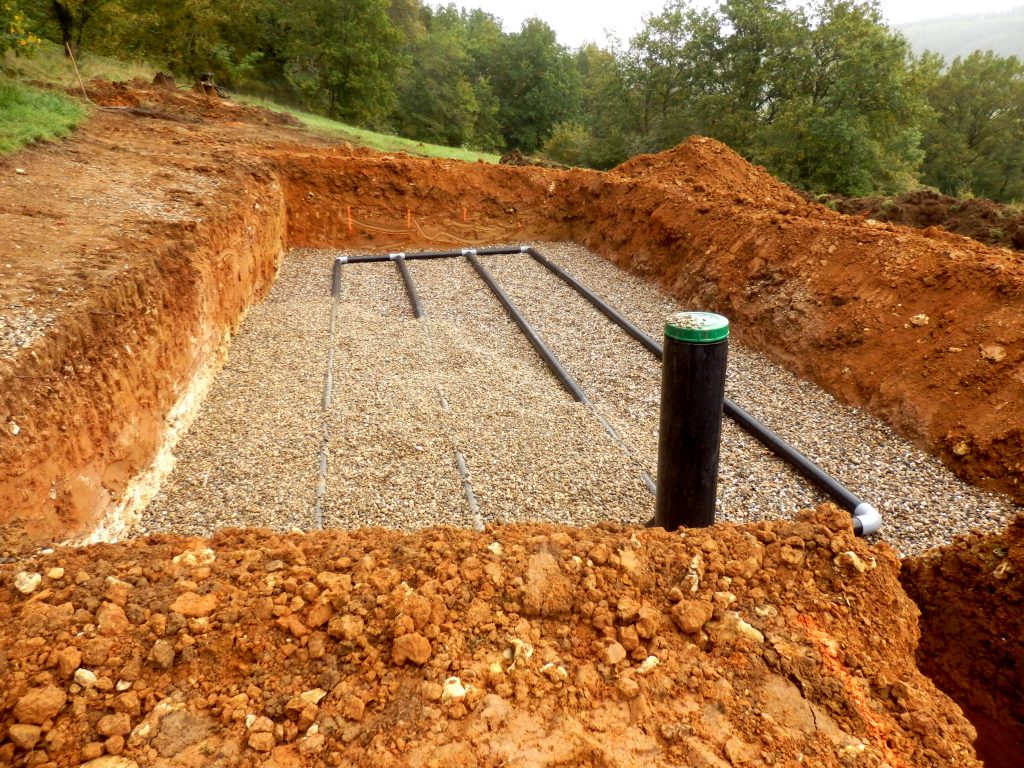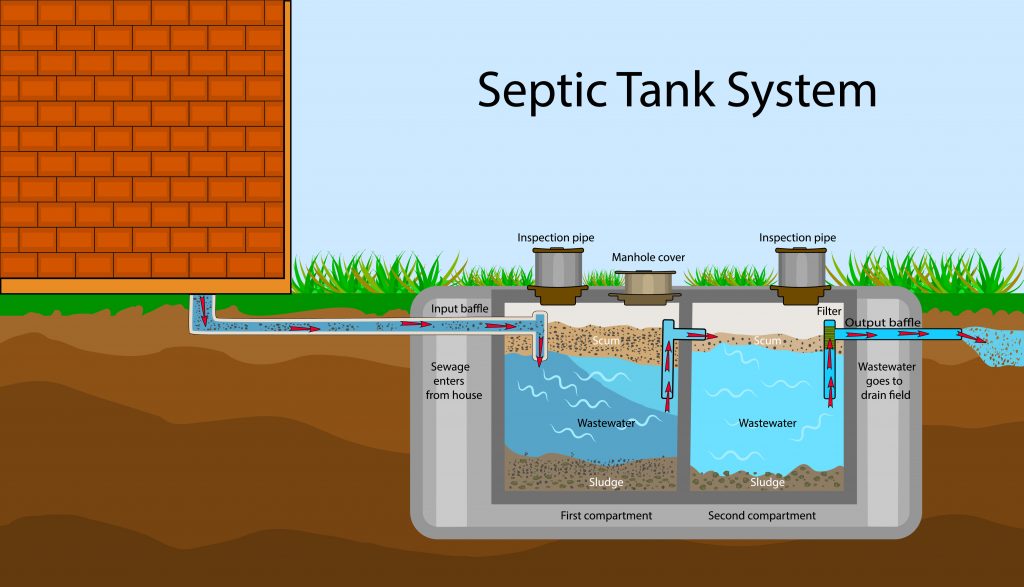Septics & Water
How Septic Systems Affect Water Quality
Properly functioning septic systems will remove phosphorus, nitrogen, bacteria, and viruses from wastewater, but failing ones allow these pollutants to contaminate our lakes and/or groundwater. These contaminants can destroy plant and animal habitat, cause beaches to be closed, and hurt the fishing industry. Human health is also at risk from failing septic systems; according to the US EPA, when people come in contact with water contaminated by these pollutants through recreation or drinking, they may suffer from eye or ear infections, gastrointestinal illnesses, or diseases like hepatitis. If drinking water wells are in close proximity to septic systems, especially if they are downhill from the leach field, they may be contaminated, making entire families sick. The Indiana State Department of Health maintains a list of diseases involving sewage; there are currently fourteen dangerous or bothersome diseases on that list.
How Big is the Problem?

There are approximately 1 million septic systems in Indiana, and the Indiana State Department of Health (ISDH) estimates that 200,000 of these are inadequate and have failed or are failing to protect human and environmental health. According to a publication by Purdue University on Septic System Failures, “We can estimate that every failing septic system can discharge more than 76,650 gallons of untreated wastewater into Indiana’s groundwaters and surface waters per year. That means that the 200,000 failing septic systems in Indiana estimated by the ISDH are introducing approximately 15.3 billion gallons of raw sewage into the environment annually.”
How a Septic System Works

A septic system is an on-site treatment system designed to handle household wastewater. The system consists of three main components – a septic tank, a distribution box, and a soil absorption system (leach field, finger system, or absorption field). Wastewater from toilets, sinks, showers, and other drains flows from the household to an underground septic tank. Once in the septic tank, the waste separates. Solids settle on the bottom of the tank forming the sludge layer, grease and fatty solids float to the top forming a scum layer, and the remaining liquid remains in the middle and forms the liquid layer. Once separated, the liquid layer, or effluent, flows from the septic tank into the absorption field by way of the distribution box. In the absorption field, the effluent moves through the pipes and seeps into the surrounding soil. The soil filters out suspended solids and organic matter. Bacteria in the soil then decompose harmful microorganisms and other organic components. Clay particles trap viruses which eventually die. Treated effluent continues downward as it percolates through the layers of soil.